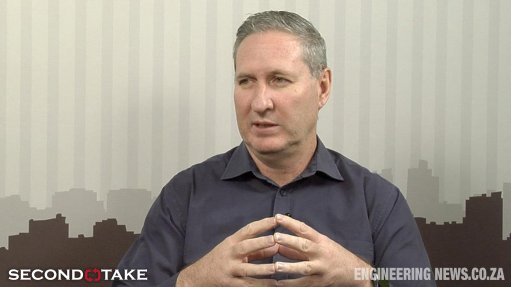Opinion piece: Route optimisation and line of sight are key to maximising van sales in the main market
This article has been supplied as a media statement and is not written by Creamer Media. It may be available only for a limited time on this website.
By Andrew Dawson, Commercial Director at MACmobile
The Fast Moving Consumer Goods (FMCG) market in Kenya is a unique space that faces challenges seen nowhere else in the world. The secondary distribution network in particular is where many issues arise, as the space is dominated by an informal main market where visibility and line of sight are extremely limited. Van sales make up a significant proportion of total sales, the success of which is entirely dependent on who gets to the retailer first and how much share of wallet is available at that point. The ability to optimise the route of drivers is thus critical, which in turn requires data that can be analysed for enhanced insight and intelligence.
The challenge in the Kenyan market
The formal FMCG market has a well-established value chain from the primary distribution network of the manufacturer and wholesaler. This market is mapped out, well understood and generally accessible by fleets and delivery trucks, with line of sight easily achieved. There are also numerous solutions available to help optimise logistics, with digital mechanisms to ensure proof of delivery, collection, payment and more. The secondary redistribution model is a different story, however, particularly in this African market.
This network is widely dispersed, with retailers spread from supermarkets in metropoles to small stores in rural areas. The distributor’s ‘fleet’ may consist of large trucks, pickups, regular vehicles, mopeds and wheelbarrow. There are in excess of 60 000 informal retail outlets, where the lack of formality makes tracking, managing and monitoring extremely difficult and creates a significant line of sight gap.
These outlets do not typically deal in presales either, so although the delivery route is generally known and repeated (efficient or not) the consignment of stock placed on a delivery vehicle and sold along the way is not guaranteed to all be sold by close of business . The result of this is that drivers may not always be able to sell their wares at the same locations on every journey, and returning with unsold stock contributes significantly to the cost of sales.
Line of sight for route optimisation and competitive advantage
The ability to create line of sight, gather data and analyse it for the most optimised route possible can be a significant source of competitive advantage. If distributors always know where their drivers are, what they have sold, what stock remains and how much cash has been collected, they can use this data in a number of ways. Intelligence and analytics can be applied to build models to plot more effective routes to maximise sales. Algorithms can also assist distributors with building a data set to give key distributors and partners the tools and intelligence they require to make both presales and van sales more efficient.
A technology solution
The key to achieving this lies in intelligent mobile technology. A mobile app can enable drivers to track stock movement and availability of goods, allowing them to log sales on the go. GPS tagging and tracking helps distributors to manage their fleet regardless of whether they are servicing the formal or informal sectors. Insights can be gained by confirming the time they arrive at a retail outlet, the activities that occur there, sales made and the time they leave.
By analysing this data distributors can understand how long it takes drivers to travel between outlets and the duration spent at each in relation to revenue generated. From the perspective of route optimisation, distributors can then plot routes that combine outlets in such a way as to maximise the time spent on the road versus revenue generation. Distributors can also pick up any exceptions such as route deviation or irregularities.
The key to optimisation is data that can be analysed for intelligence. This in turn enables distributors to plot more efficient routes, identify patterns and trends, highlight risks and figure out how to mitigate them for maximum sales efficiency regardless of the market.
Comments
Announcements
What's On
Subscribe to improve your user experience...
Option 1 (equivalent of R125 a month):
Receive a weekly copy of Creamer Media's Engineering News & Mining Weekly magazine
(print copy for those in South Africa and e-magazine for those outside of South Africa)
Receive daily email newsletters
Access to full search results
Access archive of magazine back copies
Access to Projects in Progress
Access to ONE Research Report of your choice in PDF format
Option 2 (equivalent of R375 a month):
All benefits from Option 1
PLUS
Access to Creamer Media's Research Channel Africa for ALL Research Reports, in PDF format, on various industrial and mining sectors
including Electricity; Water; Energy Transition; Hydrogen; Roads, Rail and Ports; Coal; Gold; Platinum; Battery Metals; etc.
Already a subscriber?
Forgotten your password?
Receive weekly copy of Creamer Media's Engineering News & Mining Weekly magazine (print copy for those in South Africa and e-magazine for those outside of South Africa)
➕
Recieve daily email newsletters
➕
Access to full search results
➕
Access archive of magazine back copies
➕
Access to Projects in Progress
➕
Access to ONE Research Report of your choice in PDF format
RESEARCH CHANNEL AFRICA
R4500 (equivalent of R375 a month)
SUBSCRIBEAll benefits from Option 1
➕
Access to Creamer Media's Research Channel Africa for ALL Research Reports on various industrial and mining sectors, in PDF format, including on:
Electricity
➕
Water
➕
Energy Transition
➕
Hydrogen
➕
Roads, Rail and Ports
➕
Coal
➕
Gold
➕
Platinum
➕
Battery Metals
➕
etc.
Receive all benefits from Option 1 or Option 2 delivered to numerous people at your company
➕
Multiple User names and Passwords for simultaneous log-ins
➕
Intranet integration access to all in your organisation




















